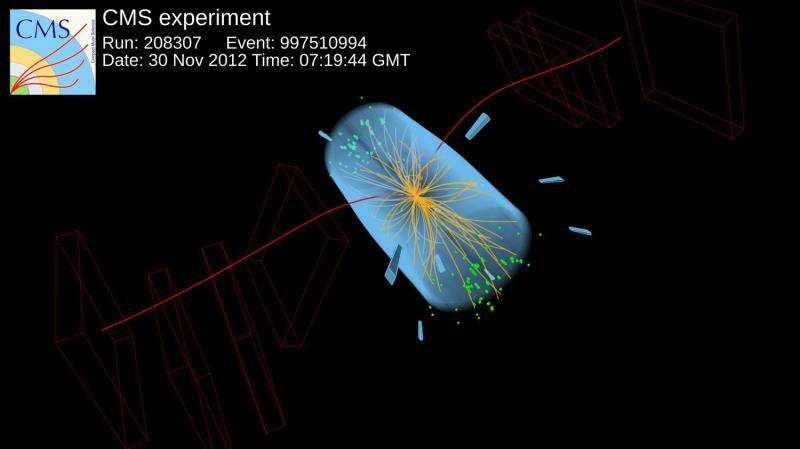May 18, 2015 report
Best of Last Week – Study backs Standard Model, splitting an electron and human attention span now shorter than goldfish

(Phys.org)—It was a pretty big week for physics as a team of researchers working at CERN's LHC reported that a three-decade long quest backs physics' Standard Model. They detected a revealing change in a sub-atomic particle that further backs a key theory about the universe. Also, some other researchers reported progress in answering the question: What happens when Newton's third law is broken? Apparently, sometimes extreme temperature gradients can be generated on the particle scale.
Meanwhile, another team of physicists found mysterious anti-electron clouds inside a thunderstorm—they noted a big cloud of positrons, the electron's antimatter opposite, that should not have been there and the discovery may help explain how lightening gets its start. Also, a multinational effort has resulted in the creation of a new shield that makes certain types of searches for physics beyond the Standard Model possible for the first time—the device offers more than 10 times better magnetic shielding than previous efforts. And another team of researchers looked into what happens when an electron splits in two and developed a method for allowing observations of single-electron fractionalization at the picosecond scale.
In other news, Fixstars announced a six-terabyte solid state drive that is now for sale—the world's first. Some scientists looking at simple Leonardo da Vinci experiments added some advanced theory that helped reveal new atomic-level insights into rubber—more specifically, what goes on with friction when tires meet pavement. Another team discovered a drug that perks up old muscles and aging brains, by reinvigorating stem cells in both. And new work by researchers at NOAA Fisheries revealed the first warm-blooded fish—the silvery opah was found to circulate heated blood throughout its body, similar to the way it is done with mammals.
And finally, if you have been finding your mind wandering more of late, you might not be alone, as a Microsoft study claims human attention span now lags behind goldfish—apparently our digital devices are cutting into our ability to focus on any one thing for very long—seems we are down to just eight seconds compared to twelve back in 2000. The goldfish is holding steady at nine seconds.
© 2015 Phys.org





















